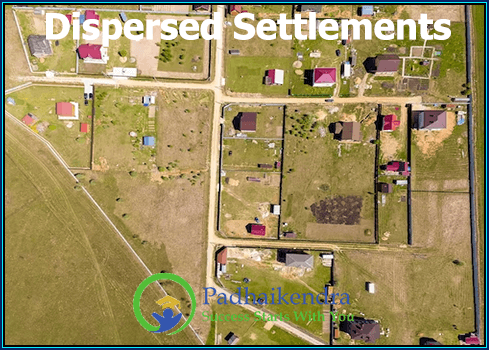Dispersed settlements refer to communities where individual homes or buildings are located far apart from each other, with large distances between them. This type of settlement pattern is often found in rural areas and can have several features:
- Homes or buildings are located far apart from each other, with large distances between them.
- Dispersed settlements often have a low population density, with fewer people living in a larger area.
- Dispersed settlements tend to be predominantly agricultural, with farming and livestock raising being the main economic activities.
- Transportation infrastructure tends to be limited, with most travel taking place by foot, bicycle, or animal-drawn cart.
- Social and cultural activities tend to take place in the home or in shared community spaces such as a village hall or community center.
- Dispersed settlements can offer a high degree of privacy and independence, with homes and buildings located in natural settings.
- Dispersed settlements can have a large ecological footprint, as they often require extensive infrastructure such as roads, power lines, and water pipelines.
Overall, dispersed settlements can offer a unique and independent way of life, but they can also have significant drawbacks. Limited access to services, high ecological impact, and social isolation can be challenges associated with dispersed settlements. To ensure sustainable and inclusive development in dispersed settlements, it is important to consider factors such as land use planning, transportation infrastructure, and access to basic services such as healthcare, education, and clean water.





